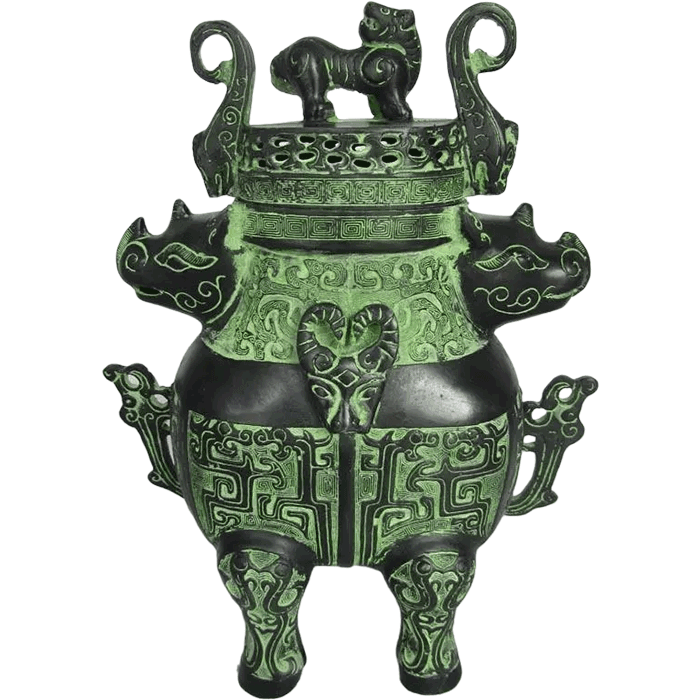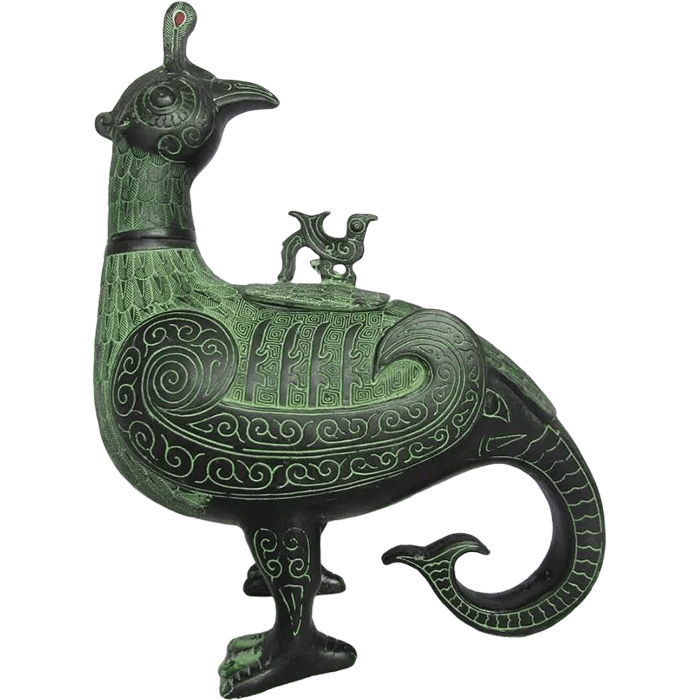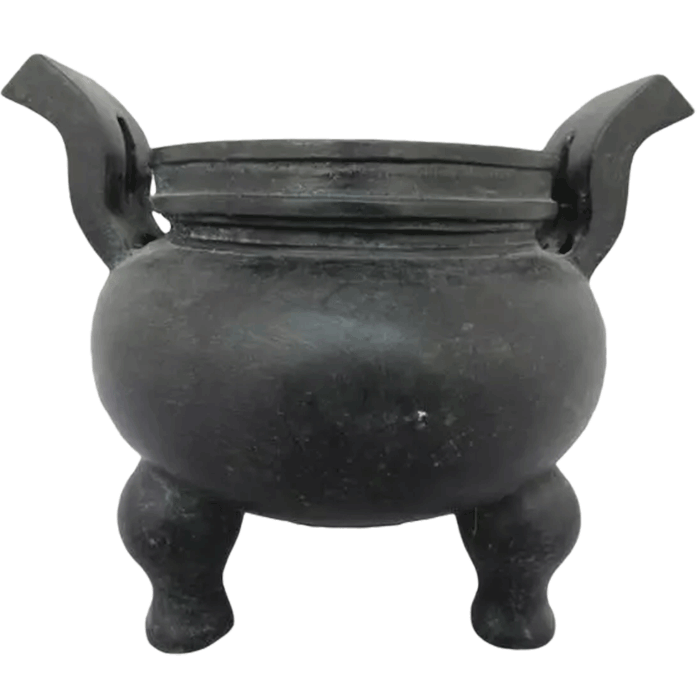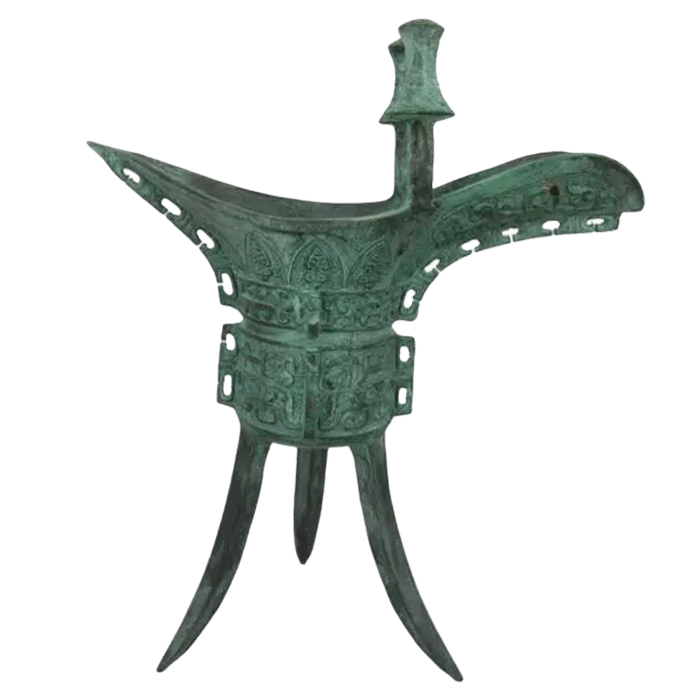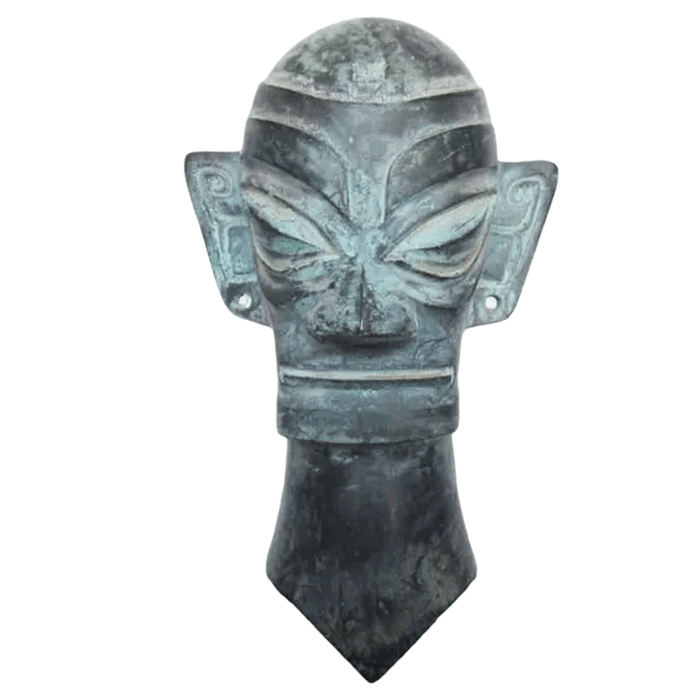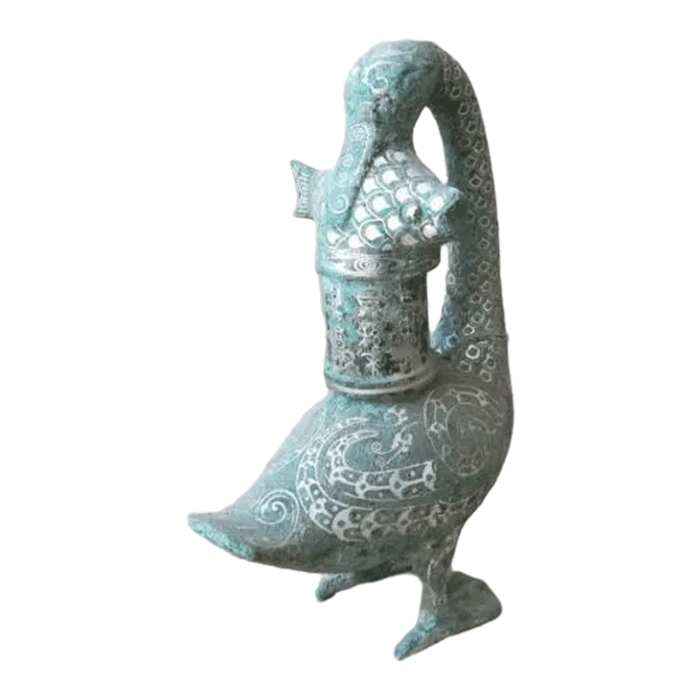"Casting Ding Statue" - Shang Dynasty Bronze Sculpture
Part 1
Siyang Zun
Siyang Fang Zun is a bronze sacrificial vessel in the late Shang Dynasty, used for sacrifices. Unearthed in Hunan in 1938, it is collected in the National Museum of China.
The Siyang square statue is the largest bronze square statue of the Shang Dynasty still in China. It has a long neck and high feet. The four sides are decorated with banana leaf patterns, Kui patterns and animal face patterns. Sheep, the four corners of the shoulders are four curly-horned sheep heads, the sheep heads and necks protrude from the outside of the vessel, and the sheep body and legs are attached to the abdomen and ring feet of the statue.
According to the analysis of archaeologists, the Siyang Zun was cast by two separate casting techniques, that is, the horns and the dragon head were cast separately, and then they were respectively fixed in the mold, and then cast as a whole. The historians call it "the ultimate bronze model", and it is one of the top ten national treasures handed down from generation to generation. It is a national super cultural relic and one of the top ten top handed down national treasures.
The Four Goats Square Zun takes four goats as the main modeling element, which is symbolic. At that time, sheep had two major symbolic meanings in people's minds: one was kindness and propriety; the other was softness on the outside and strength on the inside. There is also a saying in "The Book of Songs Zhaonan" that "Wen Wang's government is honest and upright, and his virtue is like a lamb".
The bronze ware represented by Siyang Fangzun focuses on sheep, which not only retains the original totem worship, but also has the meaning of replacing sheep as a sacrifice to the gods. At the same time, it also contains the expectation for the prosperity of sheep and other livestock breeding. Ideas about sheep.
Part 2
Tiger eats man (yǒu)
The Tiger Cannibal You is a bronze treasure in the late Shang Dynasty in China. The You is a kind of wine vessel and a ritual vessel, which is a symbol of the aristocratic class. There are two pieces in total, both of which are exiled abroad. It is said that one is hidden in the Oriental Museum of Art in Paris, France, and the other is hidden in the Izumiya Museum in Japan.
The shape of the tiger-eating cannibal is the posture of a crouching tiger hugging a human. The tiger supports its body with its rear legs and tail, which also form the three legs of the you. The tiger is holding a person in its front paws, and the person is squatting on the tiger's chest. A pair of bare feet stepped on the tiger's claws, with both hands stretched out to the tiger's shoulders, the tiger wanted to eat the human head with its mouth open. There is a lifting beam attached to the shoulder of the tiger. There are animal heads at both ends of the beam. The upper part of the tiger's back is an oval mouth with a cover, and a deer stands on the cover. The cover is decorated with curly-tailed Kui patterns, and it is also based on thunder patterns, which is consistent with the body. The tiger's ears are erected, and its teeth are very sharp.
Such a strange theme, what was the original intention of people to create it?
In the Shang Dynasty, the tiger was used as the shape of the utensil, which should be an attempt to show the majesty of the power of the nobility. Some scholars believe that the tiger is the totem of a certain clan in Dongyi, and the tiger cannibalism means that the captives are dedicated to the totem god. Some people who hold this totem theory believe that tiger cannibalism means that people with Tiger God as their totem are protected by Tiger God. There is also a saying that this is the tiger god eating evil spirits, which is intended to drive away evil spirits and seek good fortune.
PART 3
owl respect
Fu Hao Owl (xiāo) Zun
The owl is respected as a wine vessel. An owl is what we call an owl. The image of the owl is widely used in jade, stone, pottery, and bronze wares of the Shang Dynasty.
There are two pieces from Fuhao's tomb, which are in the shape of a standing owl as a whole, with its head raised slightly, facing the sky, small ears and high crown, round eyes and wide beak, wings close together, feet and tail forming three support points, making the owl-shaped body Stand still.
Behind the head is the mouth, and the cover is cast in the shape of a standing bird. The whole body of this statue is lined with thunder patterns, and there are more than a dozen animal images of different shapes all over the body.
There is an inscription in the mouth, which is the word "Fuhao". This owl statue has a magnificent shape and gorgeous patterns. It is not only a practical tool, but also an excellent work of art. It is a boutique among the bronze wares of the Shang Dynasty. Two owl statues were unearthed from Fuhao's tomb, one in the National Museum of China and the other in the Henan Museum.
Some researchers believe that the "mysterious bird" in the family origin myth of the Shang nationality "the mysterious bird of destiny descended to give birth to Shang" is actually the owl incarnate of the ancestor god of merchants.
PART 4
Elephant Zun
Liling Elephant Zun
Shang Dynasty Xiangzun unearthed in Liling, Hunan Province, the late Shang Dynasty, wine vessel, is a rare treasure among bronze wares of the Shang and Zhou Dynasties, and is currently the only Shang Dynasty pictographic statue collected in China. Full of mystery.
There are more than 20 animal patterns on the body of the statue. The main patterns are: 1. Taotie pattern, 2. Kuilong pattern, 3. Tiger pattern, 4. Black bird pattern, 5. Snake pattern, 6. Cloud and thunder pattern. pattern etc. The overall decoration and composition are ingenious, pay attention to changes and unity, and have a strong sense of craftsmanship.
The four bas-relief images of Kui dragon patterns on Xiangzun's buttocks are agile in shape and finely depicted. Among them, there is a larger Kui dragon pattern in the middle of the buttocks, with the head facing down and the tail facing up, and the "and"-shaped dragon horn feature Obviously, the tail is in the style of curly grass.
The clouds and thunder patterns are interwoven and decorated between the various patterns of the elephant statue, stretched in a continuous pattern, as a foil for the base pattern, and set off the main patterns on the body of the elephant statue, such as Kuilong, Taotie, tiger, and black bird, resulting in a well-arranged design. Effect.
The cultural implication on the elephant statue mainly embodies the idea of "God and Man in Harmony". I want to use the auspicious patterns such as gluttony, dragon, tiger, and black bird to entrust people's respect for the gods, and at the same time hope to get the blessing of the gods . The form of image composition with the tiger on the top and the black bird on the bottom of the elephant trunk implies that the Shang people also passively absorbed the regional culture of Ba people's admiration for tigers.
Sculpmart is a professional bronze art and bronze wares manufacturer providing Chinese Bronze Handcraft arts which will allow you to have a chance to own a masterpiece of Chinese bronze sculptures. If you like, you may choose the style to customize, send us the image and design, our craftsman will reproduce and cast a perfect bronze ware for you.


